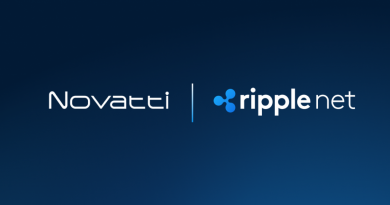Crypto and blockchain: What the Brazilian market can expect for 2021
Cointelegraph Brasil invited some of the country’s top crypto and blockchain experts to chart the next steps for the market.
2020 will be remembered as one of the most difficult years for contemporary societies: Countries and entire populations have faced lockdowns and economic crises, financial markets still suffer from the severe impacts of the economic recession, and more than 2 million lives have been taken by COVID-19.
Despite this, other sectors have been impacted in other ways during the severe global health crisis — which still seems far from over, even though vaccines are beginning to be distributed in wealthy countries. Economies have radically digitalized, hedge assets have attracted mistrust, and the crypto market has had one of its most important years since 2009, the year of Bitcoin’s (BTC) launch.
In fact, the crypto and blockchain markets have stood out in the face of a crisis that has spared almost no sector. Cryptocurrency funds are among the most profitable of the year, Bitcoin and the biggest altcoins reach new historic highs, large institutions and investors in the financial markets have allocated investments in Bitcoin, and blockchain technology has broken down barriers in the financial sector and in the production chains of the most varied of sectors.
Faced with a year of profound changes, what is to be expected for the future? Cointelegraph Brasil invited some of the country’s top crypto and blockchain experts to chart the next steps for the market.
Institutional investment
Institutional investment was highlighted in 2020, finally reaching the cryptosphere, and it promises another year of growth in 2021.
According to Rodrigo Borges, founding member of the Oxford Blockchain Foundation, large Bitcoin contributions by institutional investors — which have even bought more BTC than the production capacity of miners — will intensify in 2021: “Regarding Bitcoin, I imagine that there will be an increase in demand for institutional investors, enabling the emergence of new products with exposure to Bitcoin,” analyzed Borges. He also sees “2021 as a year of consolidation and strong development in the sector.”
As for Tatiana Revoredo, MIT blockchain expert and Cointelegraph Brasil columnist, the custody of cryptocurrencies by traditional financial institutions and the adoption of stablecoins will be key in the new year:
“In the financial sector, we will see applications for custody of crypto assets being launched in Brazil, with the possible participation of the traditional market. And if the regulatory authorities allow it, stablecoins will have an expressive role in the Brazilian market, with the turnover being able to quadruple in size.”
Crypto markets
Crypto markets experienced a year of extreme optimism — or greed, as demonstrated by the Crypto Fear & Greed Index. Bitcoin reached a dramatic bottom close at $3,800 in March, and it beat its 2017 historic high of $20,000 on Dec. 16. In Brazil, the currency set a new historical record in November when it reached $106,000 Brazillian reals.
Cointelegraph Markets reporter Marcel Pechman highlighted the behavior of the market despite the setbacks suffered during the year. He recalled: “The Bitcoin and Ethereum markets developed in 2020 as never before imagined, both in terms of trading volume, price and the contribution of renowned investors like Paul Tudor Jones and Stanley Druckenmiller.”
Pechman said that despite the crypto market suffering some setbacks, the impact of those setbacks on market performance was not so significant: “We had, for example, the US Department of Justice suing BitMEX — at the time, the largest derivatives exchange — and KuCoin’s $280 million hack, and none of those affected the market.”
Pechman also recalled that the 2020 DeFi race led to expensive transaction costs on the Ethereum network but did not impact market sentiment.
OriginalMy CEO Edilson Osório agreed with the promising future of the DeFi sector, but he cautioned against fraud:
“This is an experimental and very promising market, but it must be given extra attention because of malicious groups applying scams and fraud in general. As it is a very new market, platforms may have problems with hacks, and due to the great centralization that exists (even with many platforms presenting themselves as decentralized), there is still a risk of exit scams.”
About 2020’s innovations, and the digitalization imposed by the COVID-19 crisis, Pechman also said that it will go even deeper in 2021:
“Successive innovations, which include Taproot, Schnorr and Lightning Network in Bitcoin, in addition to the launch of Ethereum 2.0 phase 0, pave the way for the next wave, with increasingly larger, scalable applications, and interconnected with traditional finance. The final proof? Fidelity offers loans covered in cryptocurrencies.”
On the domestic markets, Osório is betting on the tokenization market in Brazil, which is already used by the country’s largest crypto exchange, Mercado Bitcoin. According to him, 2021 will be a year for “maturing the security tokens market.”
“Existing protocols are beginning to be well regarded by regulators, since most of them provide for greater participation and visibility on the part of the regulator itself and allow the mitigation of various risks inherent in this market. In this race, there is a great chance that Brazil will gain prominence because the local regulator has established a regulatory sandbox and the first projects are already beginning to mobilize to have their applications running in a more legally secure environment,” – noted Osório.
Another player at the Brazilian crypto markets, João Paulo Mayall — head of operations at QR Asset Management — is also optimistic about the tokenization market in 2021. He highlighted the role of regulators in the sector’s expansion in the South American country: “I believe that the future is the tokenization of assets, debentures, court bonds, government debts. Brazil is very advanced in its banking system and we will have many surprises in this sector, so I am very optimistic. Tokenization is a billion-dollar market, but it lacks the infrastructure. Innovation came in front of the regulators, but I think they are open to listening and working on it. I think [the regulation] will happen next year, even before March 2021.”
Finally, blockchain expert Tatiana Revoredo argued that crypto adoption in Brazil, which saw its currency melt in 2020, will intensify, with Bitcoin once again asserting itself as an economic-protection asset. She believes that the crypto markets will see “an increase in the interest of Brazilians, with consequent increase in the Brazilian market, with a prominent role for Bitcoin being adopted as a protective asset.”
CBDCs and national governments
The digitization of economies has placed the discussion of central bank digital currencies, or CBDCs, at the center of debates by financial authorities around the world. One of the countries that has definitely entered this race is China, which is already conducting real tests of the digital yuan in the country. Its main geopolitical rival, the U.S., announced that for the time being, it does not intend to digitize the dollar, but it is already seeing internal pressure from not following the Chinese leadership in the sector.
The Central Bank of Brazil has also commented on the transformation of the Brazillian real into a digital currency a few times, although there are no concrete plans for that in the short term.
Osório believes the European Union will join the hype soon, further accelerating the global race for CBDCs: “Although China appears to be leading the CBDC race, other countries are also beginning to move in this direction. Among them, Estonia, which recently started an internal consultation for the launch of its currency in the digital version. In particular, I believe that in Europe a more comprehensive and organized movement should take place in this sense, given the incentives promoted by the European Union.”
Many experts try to predict the impacts of CBDCs on economies — one of the main concerns of economic regulators. Governments, which largely study the adoption of blockchain in their public processes, should also enter the debate on privacy and the digitization of money.
According to Tatiana Revoredo, “in the government sector, the forecast is for the growth of [blockchain] applications in document registration and health applications, as well as a greater concern, by the citizens, regarding the relationship between privacy and CBDC.” She also claims that payments processors should closely monitor this innovation:
“Those who should be more attentive to these movements are the means of payment, such as PayPal and their peers. They will have to look deeply into their business models as soon as governments start issuing their currencies digitally.”
Blockchain adoption
Governments have also viewed blockchain technology through a positive lens. In Brazil and Latin America, several state entities already use the technology to certify documents, including customs and notary offices. Big companies are also adopting blockchain to certify production, with use cases that are only expected to grow going forward.
Borges said that the acceleration of blockchain adoption by large companies and governments can positively impact crypto assets:
“Within the scope of blockchain technology, I see the development of interesting solutions, with the increasing involvement of traditional players, especially in the financial and agribusiness sectors, which may result in increased liquidity for certain assets.”
Revoredo agreed and highlighted the advancement of technology in the agricultural sector: “There has been a significant advance in agribusiness, with use in the identification of devices (drones, for example), integration with IoT and artificial intelligence to provide greater reliability and certify quality of agricultural production.”
Osório defended the growth of the blockchain market in 2020 and its prospects for the near future: “When we look at advances in blockchain with applications beyond digital currency, we see a growing market in the area of decentralized digital identity, including with the approach of governments. We have seen movements in governments in the US and Japan, interested in modernizing their digital governance models. And the pandemic has certainly helped to accelerate and advance discussions on the issue around the world, as it understands that the digitization of analog and traditional services is a necessity.”
The end of 2020 was a milestone that closed out one of the most dramatic years in the history of contemporary societies, but it also revealed ways to combat global economic and health crises.
Blockchain technology has helped societies fight corruption, adopt more transparent processes and even contributed to the certification of medicines and vaccines during the most serious health crisis of the last 100 years, in addition to helping companies to improve procedures, products and services.
Meanwhile, Bitcoin has strengthened as an economic protection and investment product, has attracted institutional investment giants, and — together with other crypto technologies — has even laid the foundation for central banks around the world to start implementing their own digital currencies.
We still do not know the depth of the revolution we are experiencing with the digitalization of societies and the weakening of national currencies around the world, but by the end of 2021, we will certainly know many of the answers to the questions that still plague us at the beginning of this new year.



